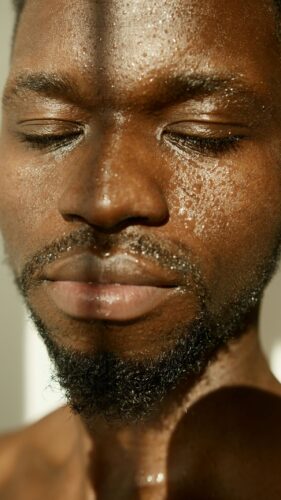How to Beat the Heat and Summer SAD Disorder

But what a lot of people don’t realize is that summer, and the intensive heat and long days of sunlight the season brings, can cause the same moods.
For some individuals, especially those on the autism spectrum, the arrival of summer can actually trigger a different kind of seasonal depression. It’s known as Summer SAD Disorder, or Reverse SAD.
What is Reverse Seasonal Affective Disorder?
Reverse seasonal affective disorder (or summer depression) is a pattern of depressive episodes that occur during the late spring and summer months instead of winter. Estimates suggest around 10 percent of those with SAD may have this pattern.
The exact physiological causes aren’t fully understood, but it’s believed that extended periods of heat, humidity, and bright sunlight can mess with people’s heads and make them feel burned out. Or more scientifically, it can disrupt circadian rhythms and neurotransmitter levels like serotonin in susceptible individuals.
For those on the autism spectrum, SAD disorder may be even more prevalent due to increased sensory processing issues and challenges regulating body temperature. The high heat and humidity, blinding bright sunlight, clanging summer thunderstorms, and disruptive schedule changes (like kids being out of school or home from college) can all contribute to feelings of overload, meltdowns, anxiety, depression, and a need for sameness. (See more on seasonal affective disorder ICD 10.)
Signs and Symptoms of Summer SAD Disorder
The core symptoms of summer depression are quite similar to regular seasonal affective disorder, including:
- Feeling depressed, hopeless, irritable, or worthless most of the day
- Losing interest and motivation in usual activities and routines
- Disrupted sleep patterns like insomnia or oversleeping
- Significant changes in appetite or weight
- Fatigue, lethargy, and lack of energy
- Difficulty concentrating or making decisions
- Feelings of anxiety, guilt, and restlessness
For individuals on the autism spectrum dealing with reverse SAD, there are some additional red flags:
- Increased sensory issues and meltdowns triggered by heat, bright light, etc.
- More self-injurious behaviors like head-banging or scratching
- Greater need for rigid routines, rules, and sameness
- Social withdrawal and isolation
While regular SAD tends to build gradually over the winter months, summer SAD disorder can strike suddenly as the temperatures climb. Where I live, it jumped 25 degrees in a single day. Yep, seriously! (Texas, by the way).
Coping Strategies for Summer Blues and Reverse SAD

- Stay cool – Use fans, portable air conditioning units, cool showers/baths, and dress in light, breathable fabrics to help regulate body temperature. Cooling vests and neck wraps can also provide relief.
- Reduce light exposure – Wear sunglasses and wide-brimmed hats when going outside. Keep curtains and blinds drawn during the brightest daylight hours. Use dimmer switches and blue-light blocking glasses for indoor lighting.
- Maintain calming routines – As much as possible, stick to soothing daily schedules, rituals, rules, and structure. Don’t let too many summer schedule disruptions pile up.
- Seek shade – Spend time outside in parks and trails in the mornings and evenings when it’s cooler. Look for shady spots to avoid the peak sun.
- Consider light therapy – While bright light can be overstimulating, some studies show dawn simulators and light boxes providing low, ambient light levels can actually help some people with summer depression by resetting circadian rhythms.
- Take supplements – Vitamin D, fish oil, melatonin, and St. John’s Wort supplements may provide a mood boost, though check with your doctor first, especially if taking medication.
- Stay hydrated – Drink plenty of cool water and be mindful of caffeine and alcohol intake which can be dehydrating. Consider hydration drinks with electrolytes.
- Seek counseling – Cognitive behavioral therapy, either in-person or online, can help identify negative thought patterns and develop coping strategies. Family therapy can also ease household stress.
- Consider medication – For severe summer depression, your doctor may prescribe antidepressants like SSRIs to rebalance brain chemistry until the seasons change.
- Find an autism support group – Whether online or in-person, connecting with others on the spectrum dealing with reverse SAD can reduce social isolation. Sharing tips is invaluable.
- Enlist loved ones – Don’t go through this alone. Talk to friends and family about how the summer impacts you. Ask for help with childcare, household tasks, or just a listening ear.
The Importance of Routines and Preparation with Summer SAD Disorder
For many on the spectrum, sticking to reliable routines and schedules is crucial for managing anxiety and preventing meltdowns. The summer months can be incredibly disruptive, with changes like family vacation plans, transitions to new classrooms or programs, taking on a new job, and the loss of the comforting structure other times of the year provide.
To minimize this warm weather chaos, parents, caregivers, teachers, and autistic individuals themselves need to get ahead of the disruptions with careful planning and preparation. A few tips (these can apply no matter the age):
- Start establishing new summer routines a couple of weeks before the old ones end to allow for adjustment time.
- Use visual schedules, checklists, calendars, and other organizational aids to map out each day/week.
- Plan calming, structured activities and outings for when boredom or restlessness strikes.
- Communicate any scheduling changes well in advance and walk through what to expect.
- Build in plenty of downtime for regrouping, decompressing, and self-care.
- Reduce added stressors like home renovations, visits from relatives, etc. when possible.
- Don’t overbook with camps, trips, or social activities if that creates overload.
The goal is to create a new summer normal that provides enough familiarity, structure, and outlets so the heat and schedule disruptions don’t completely derail emotional regulation and functioning.
Sensory-Friendly Cooling Strategies to Manage Seasonal Affective Disorder ICD 10
When the temperatures spike, even the simplest summer activities like taking a short walk or going to a playground can trigger sensory overload meltdowns related to Seasonal Affective Disorder ICD 10 in many autistic children and adults due to the heat, bright sunlight, loud fans/AC units, and more. Staying indoors isn’t always a solution either if homes become stiflingly hot.
To keep symptoms as defined by Seasonal Affective Disorder ICD 10 at bay, proactive cooling and sensory regulation measures should be incorporated into daily summer life:
- Seek out air-conditioned public spaces like museums, libraries, and malls for outings
- Pack cooling vests, neck wraps, bandanas, and misters for when out in the heat
- Apply sunscreen liberally and wear wide-brimmed hats, sunglasses, and lightweight clothing
- Set up a dim, quiet, climate-controlled “decompression room” at home for calming down
- Switch to indoor fitness like yoga, weight training, or swimming at a cool indoor pool
- Eat popsicles, frozen treats, and chilled foods/drinks to help lower body temperature
Essentially, summer presents a cascade of sensory assaults that need to be managed proactively. Keeping home environments dim, quiet, and refreshingly cool and carrying handy cooling/calming tools on summer outings can go a long way.
Managing Sleep and Energy Issues with Reverse Seasonal Affective Disorder

This fragmented sleep then contributes to irritability, moodiness, fatigue, and cognitive fuzziness the next day, setting off a vicious cycle. To improve sleep quality and boost energy levels through the warmest months:
- Use blackout curtains, white noise machines, and cooling units to ensure bedrooms stay dark, quiet and comfortable
- Avoid screens at least an hour before bedtime; the blue light is stimulating
- Get morning sunlight exposure to help set the body’s sleep-wake cycle
- Exercise daily but avoid intense evening workouts that are energizing
- Establish a calming pre-bed routine like gentle stretching, meditation, or bedtime stories
- Limit caffeine, alcohol, and heavy meals which can interfere with rest
- Consider melatonin supplements to help readjust sleep-wake cycles
Additionally, daily activity schedules may need adjusting to avoid being outdoors during peak heat periods that exacerbate reverse seasonal depression symptoms. Do chores, therapy appointments, and outings in the cooler, dimmer morning when possible.
Making the Warmest Months More Enjoyable
Summer should be a time of fun, but for many autistic children and adults, the extreme heat, bright sunlight, smells, and lack of routine can feel like daily battles. Instead of looking forward to beach days and vacations, the prospect of feeling overloaded and depressed can fill them with dread.
Being proactive about managing reverse seasonal affective disorder can make the warmest months much more enjoyable and prevent serious mental health declines. With the right cooling strategies, supplements, light adjustments, counseling support, and self-care, the summer blues don’t have to get you down.
In the meantime, don’t “freeze” during the warm months – take action to beat the heat and keep your mind healthy.
Moving Forward with More Research and Support About Summer SAD Disorder
Reverse seasonal affective disorder is still a relatively under-studied phenomenon, especially when it comes to how it manifests and impacts the autism community.
More research is needed into the potential underlying causes – whether it stems from disruptions in circadian rhythms, neurotransmitter imbalances, sensory overload, or a combination of these and other factors.

The bottom line is that while summer is considered a laid-back, joyful time for many, for some in the autism community, these months can be filled with mental health issues like dread, anxiety, overload, and depressive episodes and deserve understanding and support so summer can truly be enjoyed.
I don’t know about you, but lots of air conditioning, ice cream, and time at the lake or pool, are on my bucket list this season! How about you? I’d love to hear what you think! Email me at connor@myautismmind.com
Other Common Autistic Behaviors
There are many behaviors associated with having autism. Keep in mind that everyone presents differently, which is why it is caused by a spectrum disorder. However, there are common autism behaviors. Learn more about them.
- Autism and Eye Rolling: Why It’s Odd, But Perfectly Okay
- Eye Contact Avoidance: 8 Best Ways to See Eye to Eye
- Beyond Words – Exploring the Power of Nonverbal Autism
- 10 Proven Techniques for Managing Autism and Sensory Issues
- The Fascinating World of Autism Scripting – Unlocking the Mystery
- Understanding Neurodiversity: Uprising of the Neurodivergent
- 5 Ingenious Ways for Creating Boundaries in a Relationship
- Autism and ADHD: Making Sense of the Overlap
- Autism Masking & Code Switching: How to Redefine Acceptance
- Autistic Stimming Behaviors: Why We Do and How It’s Important
- Bottoms Up: Flipping Your World with Vestibular System Therapy
- OCD and Autism: Could You Have One Condition or Both?
- Autism in Sports: Hyper-Focus Can Be A Commanding Competitive Advantage